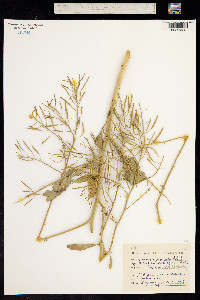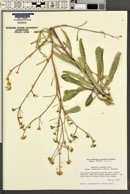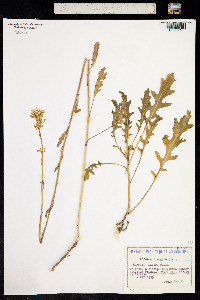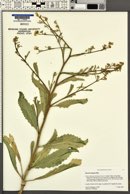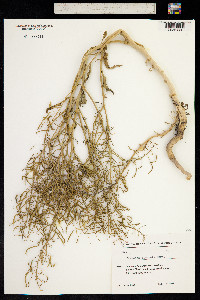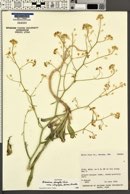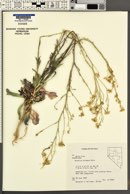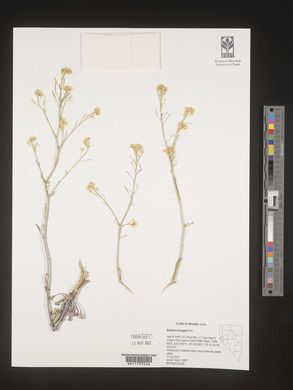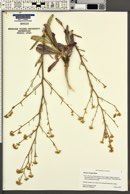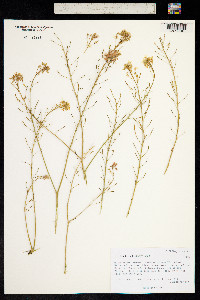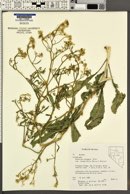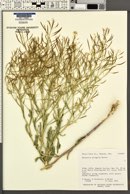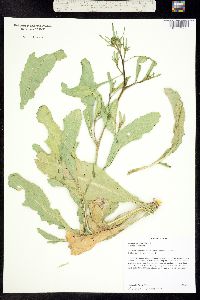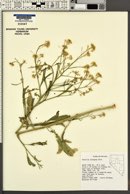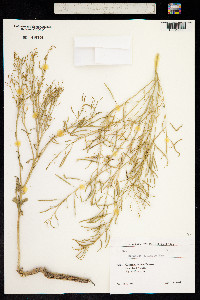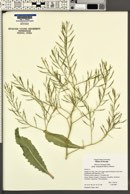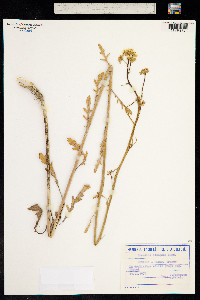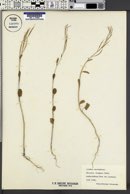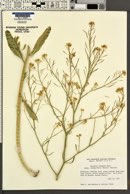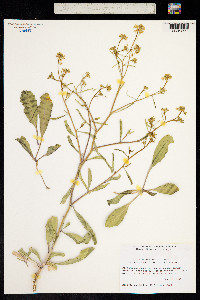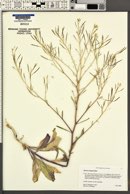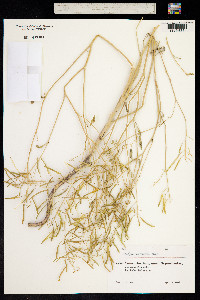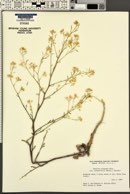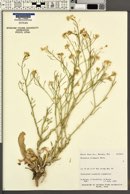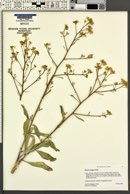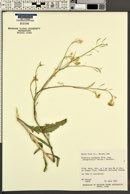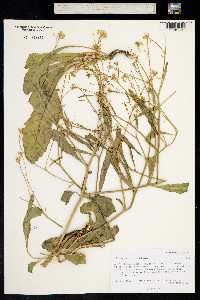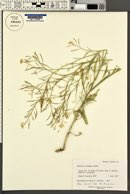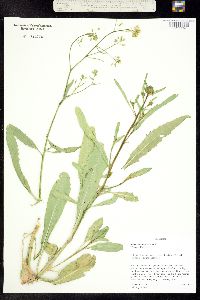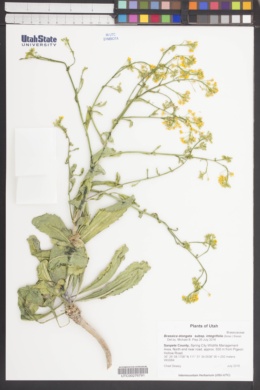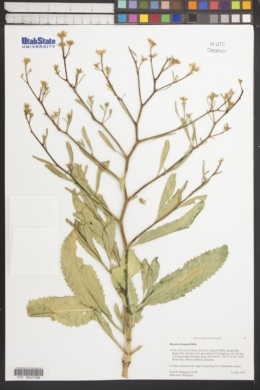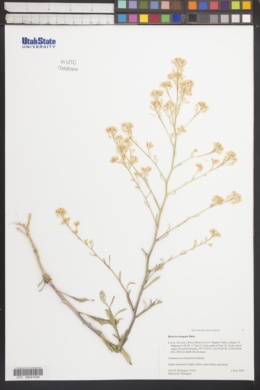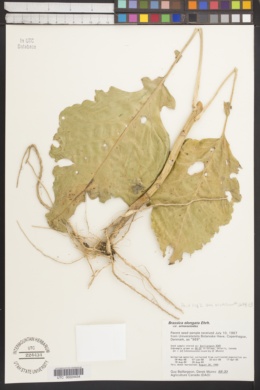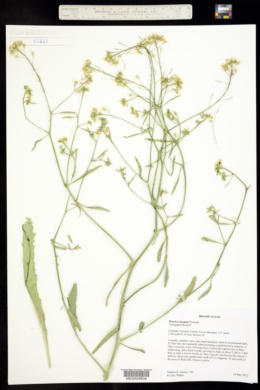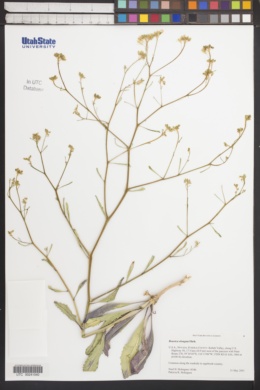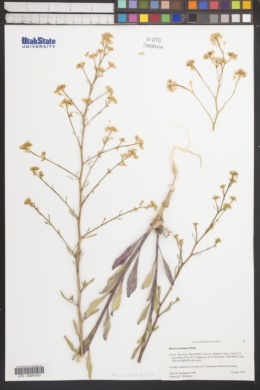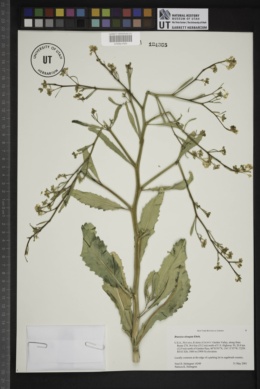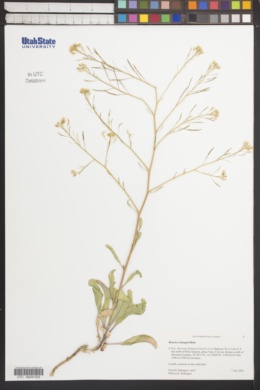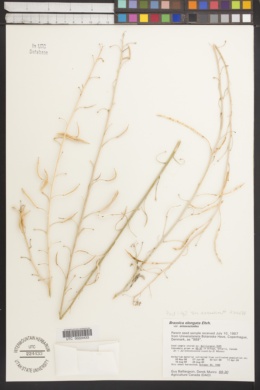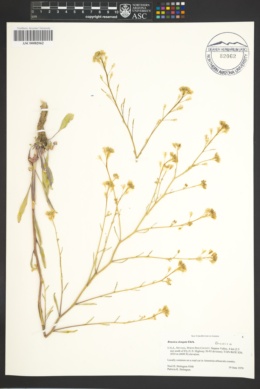

- Home
- Specimen Search
- Images
- Flora Projects
- Agency Floras
- Dynamic Floras
-
Additional Websites
- New Mexico Flores
- Plant Atlas Project of Arizona (PAPAZ)
- Southwest Colorado Wildflowers
- Vascular Plants of the Gila Wilderness
- Consortium of Midwest Herbaria
- Consortium of Southern Rocky Mountain Herbaria
- Intermountain Region Herbaria Network (IRHN)
- Mid-Atlantic Herbaria
- North American Network of Small Herbaria (NANSH)
- Northern Great Plains Herbaria
- Red de Herbarios del Noroeste de México (northern Mexico)
- SERNEC - Southeastern USA
- Texas Oklahoma Regional Consortium of Herbaria (TORCH)
- Resources
|
|
|
|
Family: Brassicaceae
Elongated Mustard
|
Biennials or perennials; (short-lived, often woody basally); glabrous or hirsute. Stems (several from base), branched basally, 5-10 dm, (usually glabrous, rarely sparsely hirsute). Basal leaves: blade (usually bright green), obovate to elliptic (not lobed), (3-)5-20(-30) cm × (5-)10-35(-60) mm, (base cuneate), margins subentire to dentate, (surfaces glabrous or often with trichomes minute, tubercled-based, curved, coarse). Cauline leaves (distal) shortly petiolate; blade (oblong or lanceolate, to 10 cm) base not auriculate or amplexicaul. Racemes paniculately branched. Fruiting pedicels spreading to divaricately ascending, (6-)8-18 mm. Flowers: sepals 3-4(-4.5) × 1-1.5 mm; petals bright yellow to orange-yellow, obovate, (5-)7-10 × 2.5-3.5(-4) mm, claw 2.5-4 mm, apex rounded; filaments 3.5-4.5 mm; anthers 1-1.5 mm; gynophore 1.5-4(-5) mm in fruit. Fruits (stipitate), spreading to ascending (not appressed to rachis), torulose, terete, (1.5-)2-4(-4.8) cm × (1-)1.5-2 mm; valvular segment with (2-)5-11(-13) seeds per locule, (1.2-)1.6-4(-4.5) cm, terminal segment seedless, 0.5-2.5(-3) mm. Seeds grey to brown, 1-1.6 mm diam.; seed coat reticulate, mucilaginous when wetted. 2n = 22. Flowering Jun-Jul. Roadsides, disturbed ground, adjacent open juniper and sagebrush desert areas; 0-2700 m; introduced; Nev., Oreg., Wash.; Europe; Asia; n Africa; introduced also in Australia. The earliest North American collections of Brassica elongata were from ballast at Linnton, near Portland, Oregon, in 1911, and from a garden in Bingen, Klickitat County, Washington, in 1915. The species does not appear to have persisted at, or spread from, either location (R. C. Rollins and I. A. Al-Shehbaz 1986). It was next collected in 1968 from east-central Nevada, where it is now well-established in Eureka and White Pine counties, and just into Lander County, and spreading rapidly along both roadsides and adjacent high desert (Rollins 1980; Rollins and Al-Shehbaz; Rollins 1993). The semiarid region of North America appears to be a well-suited habitat for B. elongata and the species appears destined to become a permanent part of the flora of the Intermountain Basin (Rollins and Al-Shehbaz). According to R. C. Rollins (1980), the Nevada plants belong to subsp. integrifolia (Boissier) Breistroffer, but the species is so variable that dividing it into infraspecific taxa is not practical.
|

Development supported by National Science Foundation Grants
(DBI 9983132,
BRC 0237418,
DBI 0743827,
DBI 0847966)
Powered by Symbiota
Powered by Symbiota


